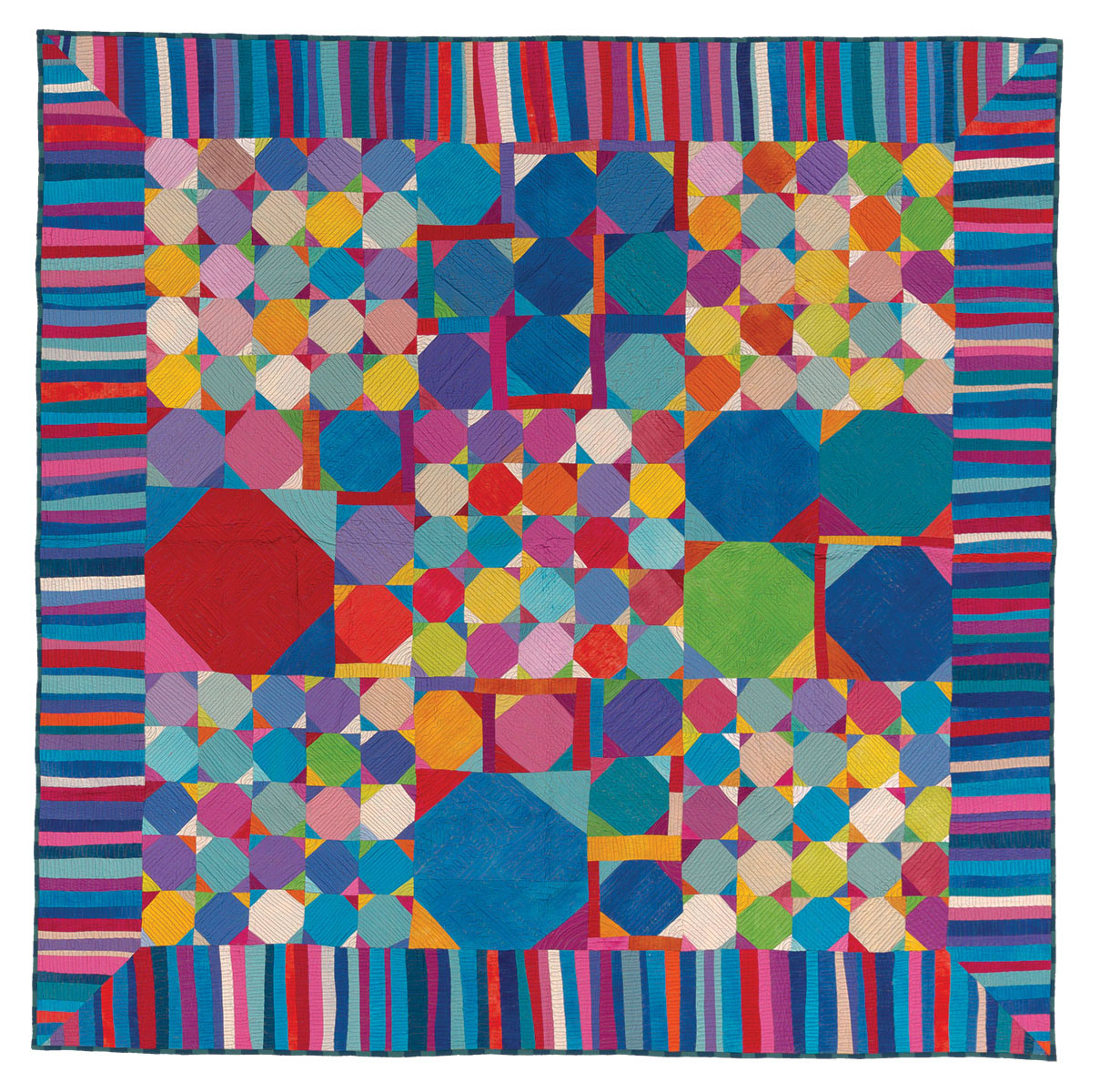
Journey to Japan
Feb 26 - Aug 7, 2021
Abstract Design in American Quilts at 50

Immediately after Abstract Design in American Quilts closed in October 1971, venues around the world requested to borrow the exhibition from collector-curators Jonathan Holstein and Gail van der Hoof. The quilts’ most distant trip was to Japan in 1975-1976. It was a journey that would produce reverberations for the next several decades.
Japan has its own long history of textile art, and American-style quilts were not completely unknown there. However, Holstein and van der Hoof’s exhibitions introduced quilts to the Japanese public in a big and splashy way, appearing at major Tokyo and Kyoto galleries as well as in smaller ones across the country. Thousands flocked to the exhibitions, which helped spark widespread interest in quiltmaking. Budding Japanese quiltmakers honed their skills quickly and by the 1980s began to enter—and win—major U.S. and international competitions. They mastered American-style quilts and also developed a uniquely Japanese (wa) quilt style. In the process, they helped expand and diversify the global quilt landscape.
For Journey to Japan, the International Quilt Museum commissioned quilts from ten of today’s top Japanese quilt artists and teachers, some of whom saw the Holstein/van der Hoof quilts in the 1970s. Each artist selected a piece from the original Abstract Design in American Quilts and responded to it using her own techniques, materials, and aesthetic approach.
The quilts in this exhibition are from the International Quilt Museum’s Permanent Collection.
February 26 - August 7, 2021
Gottsch Gallery